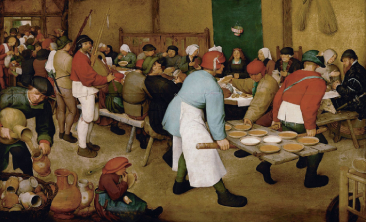
You’re Cordially Invited to A Peasant Wedding
You’re Cordially Invited to A Peasant Wedding https://www.visualstorytell.com/wp-content/uploads/2020/03/Peasant_Wedding_thumb.jpg 366 222 Shlomi Ron Shlomi Ron https://secure.gravatar.com/avatar/995c0cf093380b90c7704fda398c9addf4e5c605afbc92af5c3f01f67d65aa41?s=96&d=mm&r=g- Shlomi Ron
- no comments
I hope you and your family are well and safe during these uncertain times. To give us a little break from the news, I figured I’d share with you something different.
In my recent book – Total Acuity – I talk a lot about the importance of details to drive engagement. I use a collection of short stories from my life with details that carry marketing lessons. I also include photos, some you’ve already seen here, illustrating visual storytelling principles.
Acuity means sharpness of vision or the ability to perceive details. When your story includes details your audience truly cares about, attention spikes, then emotional empathy builds up that gradually turns into trust and behavior change.
That’s why I have always been a great fan of the art of Flemish painters like Hieronymus Bosch. During my college years, I used to have a framed poster of his fantasy-rich The Garden of Earthly Delights.
I also admire the art of Pieter Bruegel the Elder, greeted by his contemporaries as “Second Bosch” whose masterpiece, The Peasant Wedding, you see below.
Let’s talk about what’s going on in this narrative artwork where you can almost hear the raucous of the lively revelers.
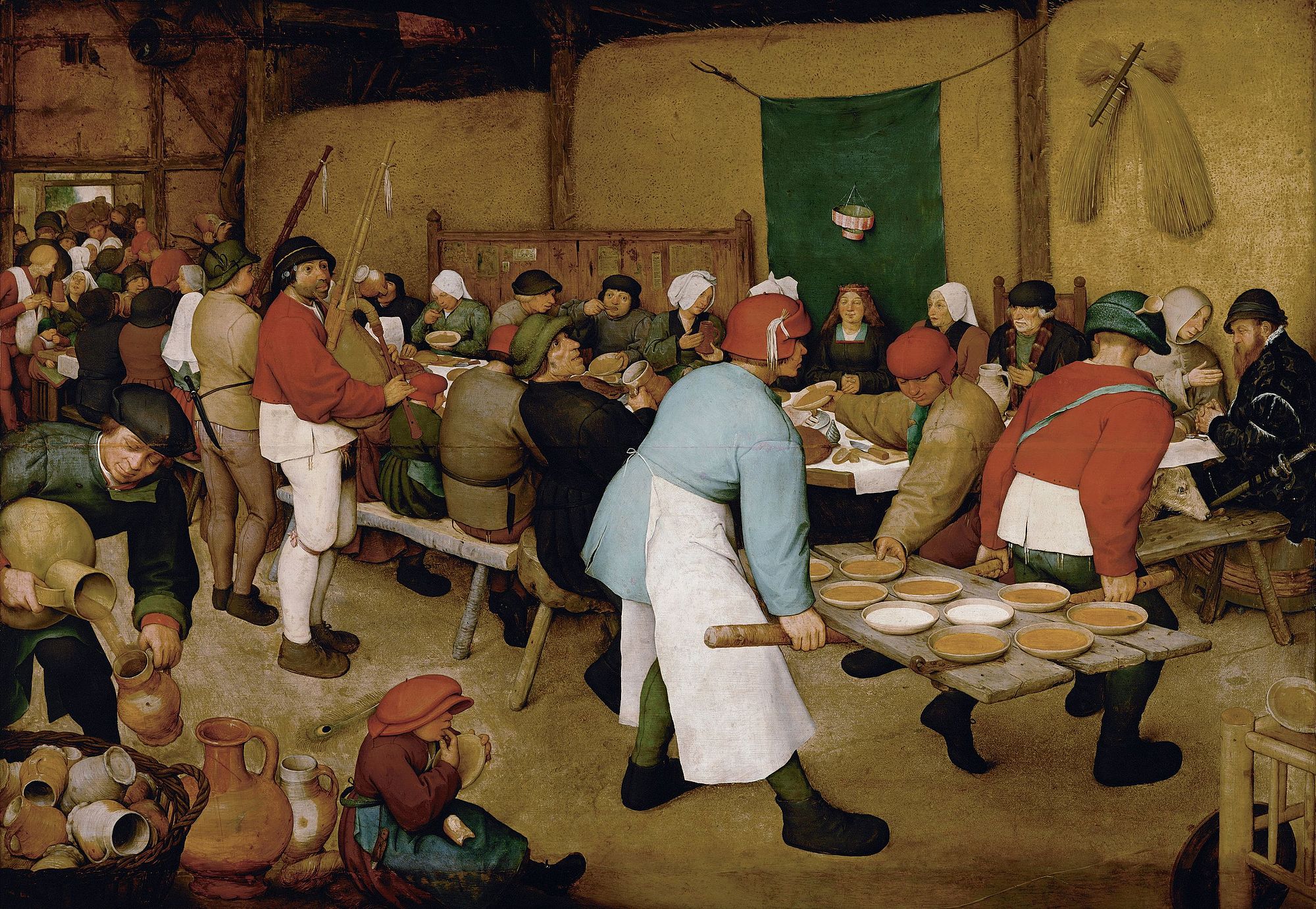 The Peasant Wedding by Pieter Bruegel the Elder (1567)
The Peasant Wedding by Pieter Bruegel the Elder (1567)
Click the image to enlarge and explore the details
As you can see, the piece is overflowing with a multitude of characters and mini-plots that carry objective and subjective meanings:
Objectively, we can all agree, that this is some kind of party and recognize the function of many elements such as soup plates, a spoon on the server’s hat, or a beer pitcher, etc.
What’s more interesting, lies much deeper where diverse subjective meanings live at the implicit level. Details you may find interesting for others may seem trivial or even weird.
You see, for every artistic choice Breugel makes such as composition, line, shape, space, motion, tone, and color – there is the artist’s personal story anchored on his past experiences that supports a larger narrative. Granted, a narrative that was right for the 16th-century society, in what is today Belgium.
Yet, for us, the audience who is watching the finished product in 2020, this personal backstory is often hidden. So we’re left with creating our interpretations based on our personal past experiences, interests, and current beliefs to piece together our own meaningful story.
I wouldn’t be surprised if some of you – considering our raging pandemic – may think these revelers are sitting way too close…
The same dynamic happens in a marketing context when you share your visual stories with your audience. As always, the engagement magic happens when your brand story mirrors your customer’s personal story.
Here is a fun drill for you that brings to life this dynamic:
- What is the first element in this piece that got your attention?
- What mood and emotions are you reading?
- What would be your 3 words to describe this painting?
- How do these 3 words show up in your life?
There are various interpretations of this masterpiece, but here are three imagined stories I couldn’t resist coming up with:
Girl sitting against green canopy:
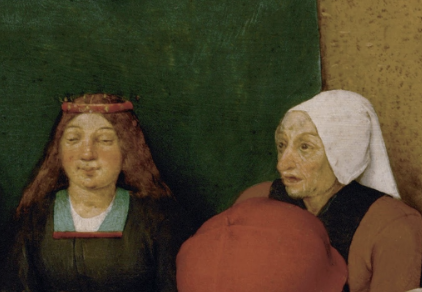 “Wear the green dress I made for you and the red wedding crown. Remember you’re the bride and the whole town will be there. Don’t make us look bad!”
“Wear the green dress I made for you and the red wedding crown. Remember you’re the bride and the whole town will be there. Don’t make us look bad!”
That’s what my mom told me after a long day of bickering. She knew I was set on my white silk dress but she insisted, claiming green is a good omen for health and wealth. Go figure!
You can see her sitting next to me inspecting that everything is according to protocol.
Bagpipe player wearing red coat:
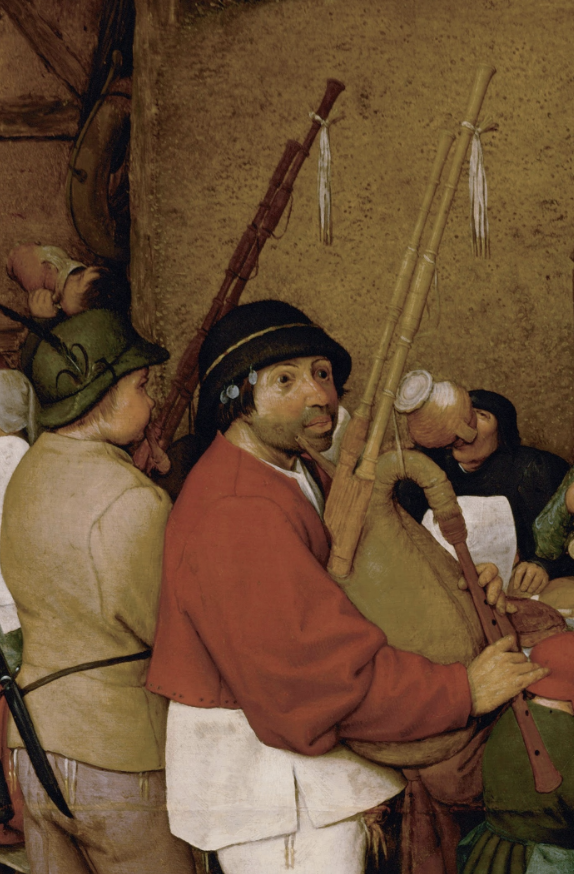 “Keep playing!” he told me. “Otherwise we won’t get paid and you know very well I badly need the money to fix my house after the last raid.”
“Keep playing!” he told me. “Otherwise we won’t get paid and you know very well I badly need the money to fix my house after the last raid.”
I put the white strings as the bride’s mom asked me to, but how could I continue playing for two hours straight on an empty stomach? These soups look so delicious,
I hope they’ll leave a few for us. I’m now beyond hungry!
Girl sitting in the far left of the table
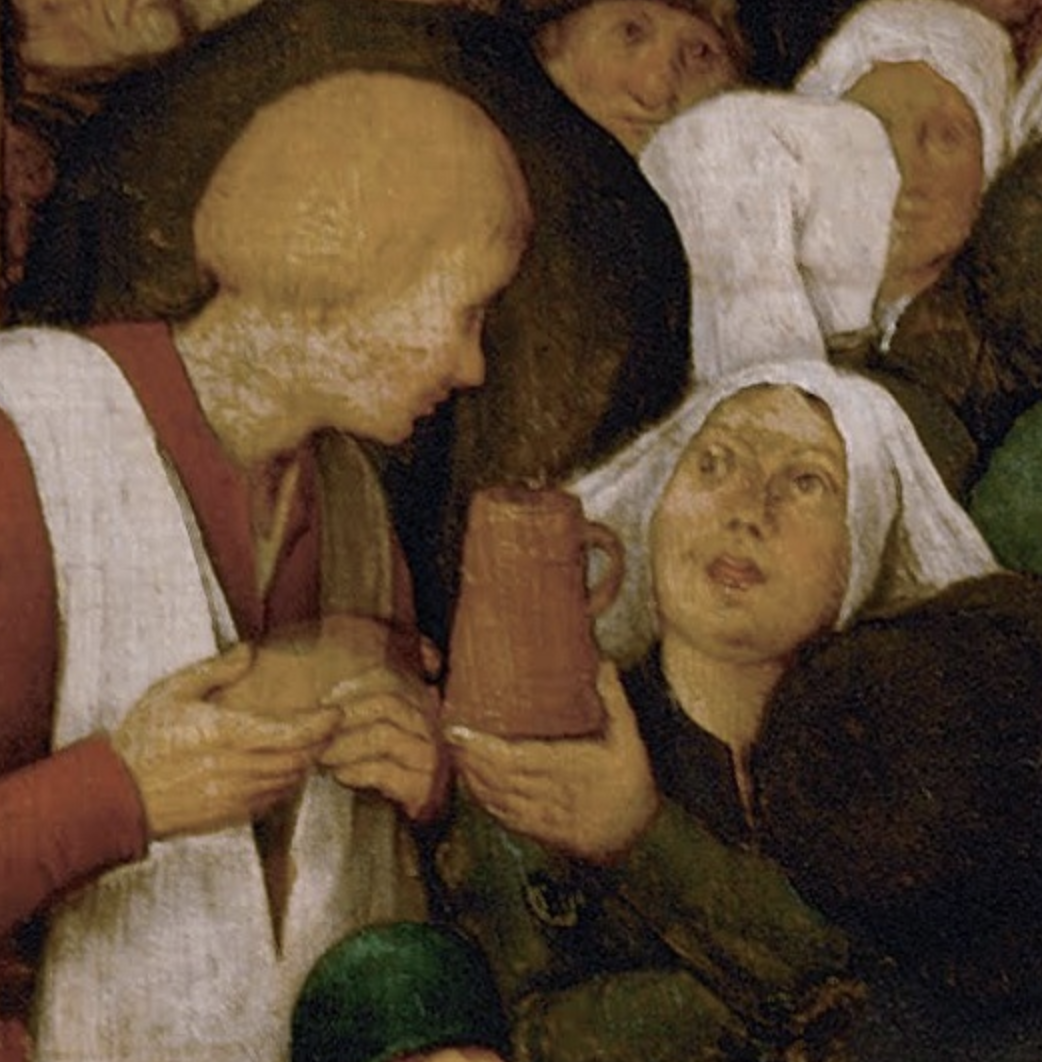 I was traveling for two days with my kid to attend my niece’s wedding. I almost didn’t make it because my kid got temporarily sick.
I was traveling for two days with my kid to attend my niece’s wedding. I almost didn’t make it because my kid got temporarily sick.
I arrived early and took the seat at the head of the table because I had thought they’d block the door behind me and open the one on the other side of the barn, which didn’t happen. My luck!
So, I ended up sitting against these insane pushes and shoves of the whole town trying to come in and have free food!
This wedding is making me thirsty: “Would you be so kind as to fill this up for me?”
What mini-stories are you reading?
Have fun exploring this masterpiece and remember, people whenever presented with new information, always complete the story in their minds based on their subjective meanings and emotions. Emotions first, logic – second.
Make sure they read the message you intended to 🙂
Stay safe!
Need help adapting your visual storytelling strategy during these uncertain times?
Feel free to throw some time on my calendar and I’d be happy to discuss.
- Posted In:
- Story Making
- Story Visualizing
- Visual Storytelling
Shlomi Ron
Shlomi Ron is the founder and CEO of the Visual Storytelling Institute, a Miami-based think tank with a mission to bring the gospel of visual storytelling from the world of art to more human-centric and purpose-driven marketing. A digital marketing veteran with over 20 years of experience working both on the agency and brand sides for Fortune 100/500 brands such as Nokia, IBM, and American Express. He started VSI to combine his marketing expertise with his passion for visual stories stemming from his interests in classic Italian cinema and managing the estate of video art pioneer, Buky Schwartz. At VSI, he helps brands rise above the communication noise through visual storytelling consulting, training, and thought leadership. Select clients include Estée Lauder, Microsoft, and Cable & Wireless – to name a few. He currently teaches Brand Storytelling at the University of Miami’s Business School. Thought leader and speaker at key marketing conferences. He is also the host of the Visual Storytelling Today podcast, which ranks in the top 10 best business storytelling podcasts on the Web. His book: Total Acuity: Tales with Marketing Morals to Help You Create Richer Visual Brand Stories. Outside work, he is a nascent bread baker, The Moth fan, and longtime fedora wearer likely to jive with his classic Italian cinema interest.
All stories by: Shlomi RonThis site uses Akismet to reduce spam. Learn how your comment data is processed.


Leave a Reply